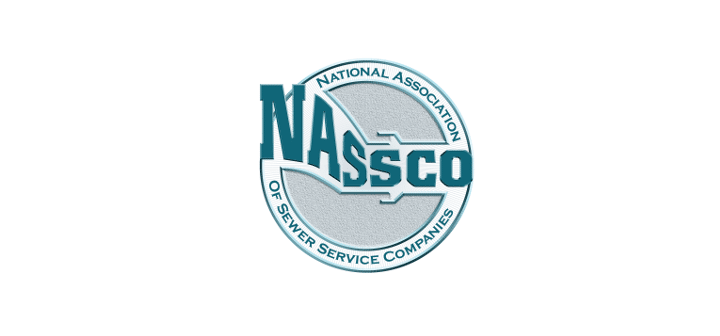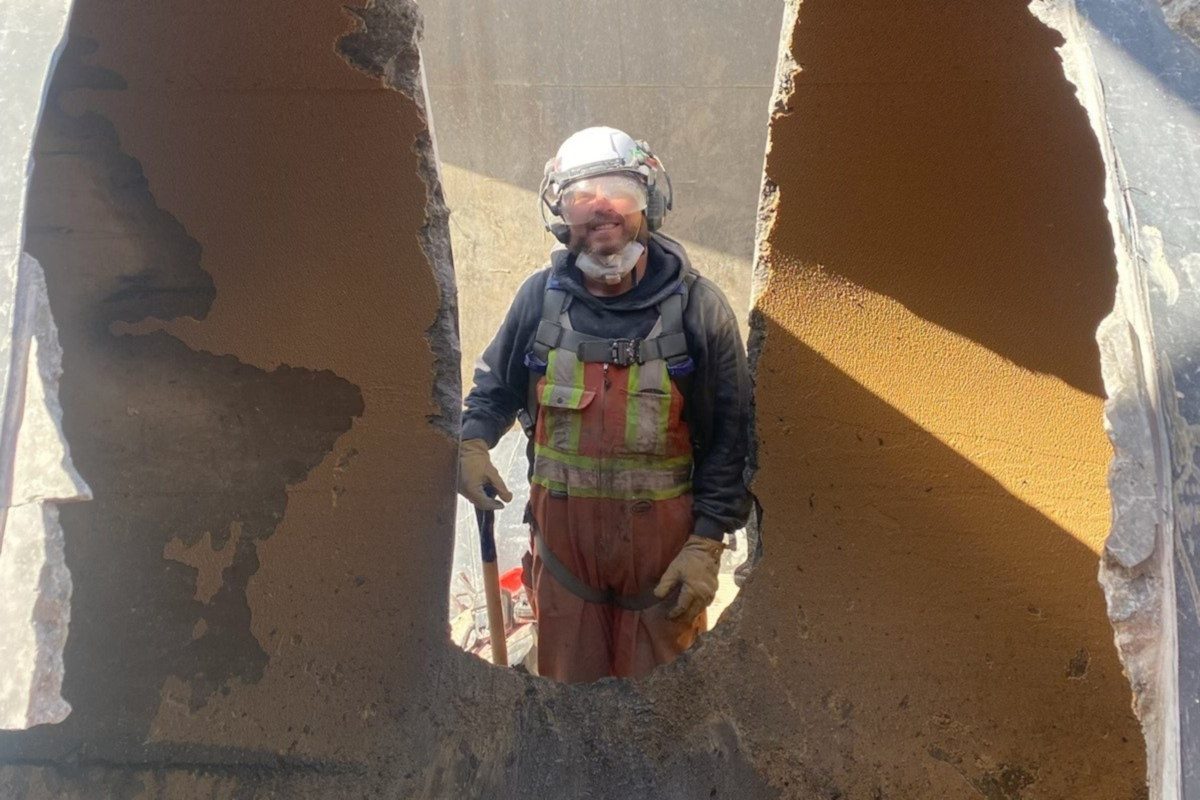
Meet NASSCO’s New Executive Director: A Q&A with Ted DeBoda
As Ted DeBoda prepares to take over as NASSCO’s new executive director in August, Trenchless Technology thought it would be a good time to sit down with the engineer to discuss his background and vision for the future. DeBoda replaces Irv Gemora, who led NASSCO for nearly a decade and who will help aid in the transition through February 2011.
Please describe your background — education and professional background, most recent duties and title at URS.
A: In 1986 I received my Bachelor of Science degree in Civil Engineering from the University of Delaware and am currently a registered engineer in both Delaware and Maryland. After working full time for the Army National Guard for about four years, in 1990 I started my sewer career in New Castle County, Del., where I served 15 years progressing within both the engineering and operations divisions. In 2005, I joined URS Corp. as a Senior Project Manager in Wilmington, Del. I was later promoted to Office Manager of the Baltimore office of URS, which specializes in water and wastewater projects. While there, I was responsible for managing day-to-day activities of the office including project management, personnel, administration, as well as marketing and client satisfaction. I am currently Vice President of the Chesapeake Water Environment Association (CWEA), and a previous Chair of the Association’s Collection System Committee.
What do you find rewarding about working in the underground infrastructure business?
First and foremost — making a difference for our communities. I consider our ability to successfully evaluate a sewer system — be it storm or sanitary — and then prepare a rehabilitation program that can specify not only where rehabilitation or replacement is required, but also determine the most cost-effective methods to make the best use of the system owner’s budget, to be extremely rewarding. On a personal level, I gain great satisfaction through the experience of working with high-caliber industry professionals who are also dedicated to maintaining the quality of life for these water and sewer customers.
What are the major challenges facing the water and sewer industry as a whole?
Funding. The Gap Analysis authored by Steven Allbee (U.S. EPA) illustrates how the gap between available funding and required funding is increasing as our infrastructure deteriorates with age. Recent stimulus funding provided minimal relief for water and wastewater projects, focusing on the more visible assets such as roads and bridges. Water and sewer is “out of sight, out of mind” and as long as this is the case, rates will also be “out of mind” and revenue generated will continue to fall short of funding requirements. On a broader scale, we all need to work together to increase awareness and overcome these issues.
How did you become involved with NASSCO?
My first experience with NASSCO came in 2002 when, having three CCTV crews in New Castle County, Del., I realized the importance of standardizing pipeline CCTV. At that time I obtained PACP (Pipeline Assessment Certification Program) Trainer Certification.
How has your involvement with the organization impacted your career?
I have met other like-minded people and have increased my knowledge base. Specifically, through my experience with the training, standardizing CCTV reporting in New Castle County made the data collected more useful for dig-up crews and contractors and this helped justify funding to digitize and store CCTV data for future use. Additionally, providing PACP certification training offered a forum to meet and network with other wastewater professionals in the area.
There are many professional associations that cut across the underground infrastructure markets. What makes NASSCO unique?
NASSCO establishes standards for underground pipeline rehabilitation and provides training and certification to meet those standards. Its board and current executive director, Irv Gemora, have done an excellent job of adhering to the mission: “To set industry standards for the rehabilitation of underground pipelines, and to assure the continued acceptance and growth of trenchless technologies.” When operational or marketing decisions are made, the mission is always considered to ensure that NASSCO stays true to unbiased representation of the trenchless industry.
How do you see your professional experience helping in your new role as executive director of NASSCO?
I believe I will be able to relate very well to the membership base of NASSCO, the people I ultimately serve. My experience in the contracting, engineering and municipal worlds gives me a great understanding of the challenges and opportunities our members face. Beyond that, I have personally used many of the services NASSCO provides over the course of my career in sewers and participated in many NASSCO initiatives. I have managed both engineering and operations within a relatively large municipality and have managed work as a consultant. Finally, I served as an officer in the Army National Guard for 20 years and look forward to drawing on the leadership experience required from this position.
What led you to seek the role of executive director?
My desire to make a difference in helping the industry evolve. Becoming NASSCO’s executive director is the only career opportunity I can think of for which I’d ever leave URS. The Baltimore office is on solid ground and the future looks good, but for me the position at NASSCO is the next step in my contribution to helping the industry grow as a whole. I’ve been in this business my entire life, and I have a passion for the industry and the professionals involved in it. This is the next step for me to personally promote trenchless technologies on a national level, reconnect with people I’ve known through the years, meet new industry experts and work to help us all come together to move our industry forward. It’s very exciting to me.
What do you see as the major impacts NASSCO has had on the market?
Without a doubt, NASSCO’s biggest contribution has been standardization. NASSCO has promoted the certification requirements associated with PACP, LACP (Lateral Assessment Certification Program) and MACP (Manhole Assessment Certification Program). The adoption of a certification program to standardize assessment practices has tremendously increased the value of the data collected by allowing consistent recommendations to be made regardless of the CCTV inspector. NASSCO has also improved the quality of cured-in-place pipe (CIPP) rehabilitation through the CIPP Inspector Training and Certification Program (ITCP), which provides inspectors with an understanding of specifications and field practices when installing CIPP. Finally, NASSCO serves as a primary source of sewer related specification guidelines such as line cleaning, pipe grouting and CIPP lining, to name a few.
What do you see as the leading priorities or initiatives of NASSCO in the immediate future? Long-term?
The main priority at this time is to maintain the momentum of NASSCO’s initiatives during the transition process. This will include transfer of the administrative duties associated with day-to-day operations of the office as seamlessly as possible, while moving forward with our current initiatives. For the short-term, we plan to update PACP and MACP, a field LACP and establish the training plan for these programs. Another relatively short-term goal is to continue the excellent work that Irv Gemora has started by completing an agreement with CSA (Canadian Standards Association) to bring PACP to Canada. CSA’s intent is to make PACP the national standard for Canada, much the same way it is in the United States. In fact, the Province of Quebec has already made PACP its local standard through CERIU (Centre D’Expertise Et De Recherche En Infrastructures Urbaines). This is a large step toward expanding NASSCO outside of U.S. borders. Finally, we need to maintain the sustainability of our certification program by keeping them up to date, maintaining quality of the program through expanding and improving training opportunities and implementing QA/QC measures and providing additional programs as technology advances and legislation evolves.
What are the benefits of a professional association in general?
Professional associations are a conduit. They provide a forum to network and transfer information, exchange lessons learned and promote new technologies to and from other professionals in the field. The professionals who join and consistently contribute to these organizations tend to also get the most out of it by developing a wide network of colleagues who can provide formal and informal learning opportunities.
Why should someone join NASSCO specifically?
We know from research that there are two main reasons our members join NASSCO: To network and to learn. We also know that they are individuals who truly want to be involved with the organization and help make a difference in the industry. While many people are first exposed to NASSCO through PACP certification, they soon learn that NASSCO is much more than PACP. The high caliber of the membership base allows for networking opportunities with professionals who have had practical experience in virtually every facet of sewers, from rehabilitation to O&M.





